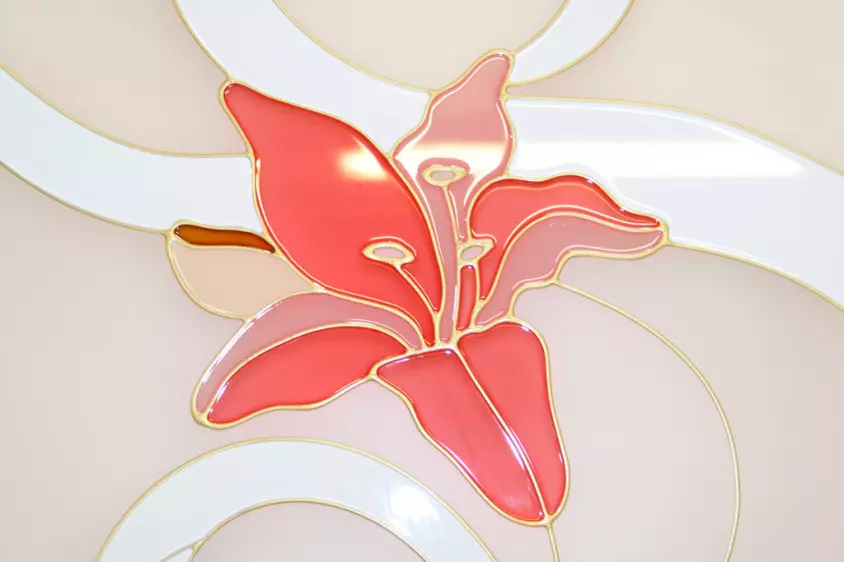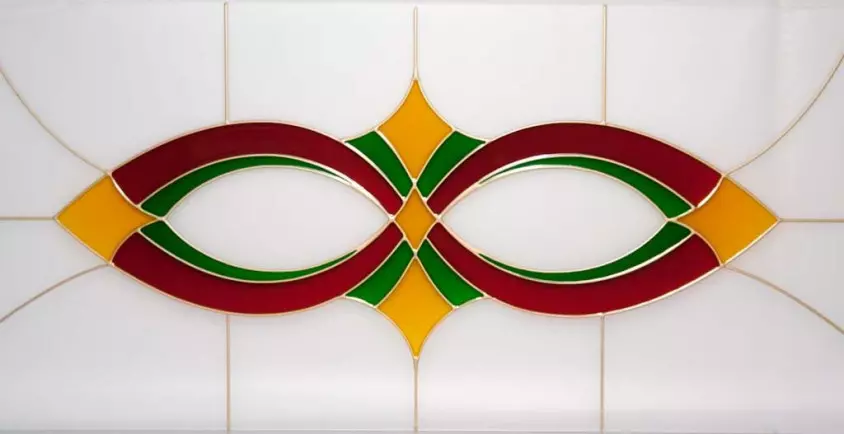Production of stained glass windows using CadRam technology.
The art of stained glass, unlike other forms of fine art, has a peculiarity - a constant change of colour and space depending on the lighting conditions. Clear sunny skies, clouds, sunrise, sunset, night - all these change the level of illumination many times over, and this changes the colour and image of stained glass. Stained glass brings space to any room.
Behind its beauty, a stained glass window can hide an unseemly landscape outside the window.
Production of stained glass windows using CadRam technology.

The essence of CadRam technology is as follows:
A heavy-duty polymer contour, either transparent or coloured, is applied to the solid glass, then the gaps are filled with coloured polymer lacquers which, when cured, form an indelible layer on the glass.
Losk stained glass has a number of advantages over traditional stained glass:
- It is possible to create contours of any complexity, not only curved, but also geometrically correct elements of any size (from a few millimetres to the size of glass) and configuration.
- CadRam stained glass is more durable than other types of stained glass, so it is more suitable for decorating windows, doors, partitions and openings. It can also be used in the design of a double glazed window.
- Stained glass can be applied to safety glass
- The cost of producing a stained glass window using CadRam technology is much lower than a traditional stained glass window, and the production time is much shorter.

The varnishes offer a wide range of colour shades, depending on the concentration and percentage of the original pigments.


